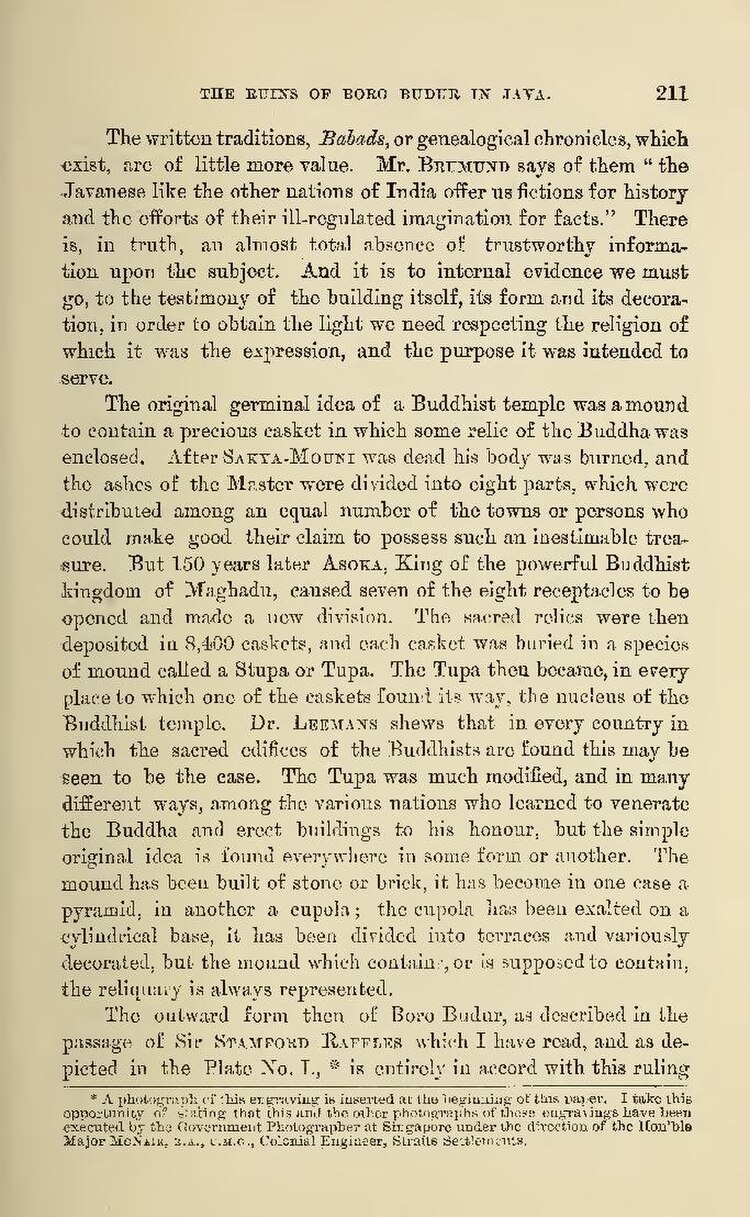The written traditions, Babads, or genealogical chronicles, which exist, are of little more value. Mr. BRUMUND says of them "the Javanese like the other nations of India offer us fictions for history and the efforts of their ill-regulated imagination for facts." There is, in truth, an almost total absence of trustworthy information upon the subject. And it is to internal evidence we must go, to the testimony of the building itself, its form and its decoration, in order to obtain the light we need respecting the religion of which it was the expression, and the purpose it was intended to serve.
The original germinal idea of a Buddhist temple was a mound to contain a precious casket in which some relic of the Buddha was enclosed. After SAKTA-MOUNI was dead his body was burned, and the ashes of the Master were divided into eight parts, which were distributed among an equal number of the towns or persons who could make good their claim to possess such an inestimable treasure. But 150 years later Asoka, King of the powerful Buddhist kingdom of Maghadu, caused seven of the eight receptacles to be opened and made a new division. The sacred relics were then deposited in 8,400 caskets, and each casket was buried in a species of mound called a Stupa or Tupa. The Tupa then became, in every place to which one of the caskets found its way, the nucleus of the Buddhist temple. Dr. LEEMANSs shews that in every country in which the sacred edifices of the Buddhists are found this may be seen to be the case. The Tupa was much modified, and in many different ways, among the various nations who learned to venerate the Buddha and erect buildings to his honour, but the simple original idea is found everywhere in some form or another. The mound has been built of stone or brick, it has become in one case a pyramid, in another a cupola; the cupola has been exalted on a cylindrical base, it has been divided into terraces and variously decorated, but the mound which contain, or is supposed to contain, the reliquary is always represented.
The outward form then of Boro Budur, as described in the passage of Sir STAMFORD RAFFLES which I have road, and as depicted in the Plate No. I.,[1] is entirely in accord with this ruling
- ↑ A photograph of his engraving is inserted at the beginning of this paper. I take this opportunity of stating that this and the other photographs of these engravings have been executed by the Government Photograpber at Singapore under the direction of the hon'ble Major McNair, R.A., C.M.G., Colonial Engineer, Straits Settlements.
